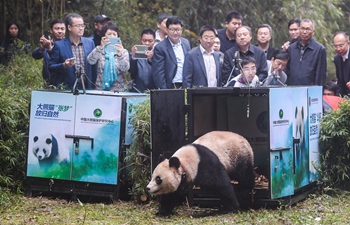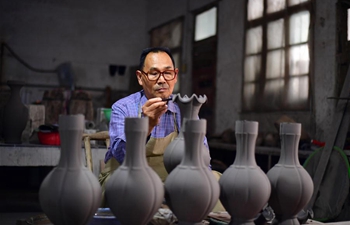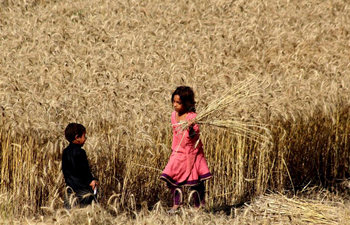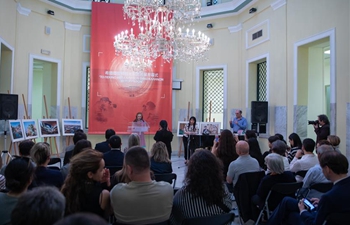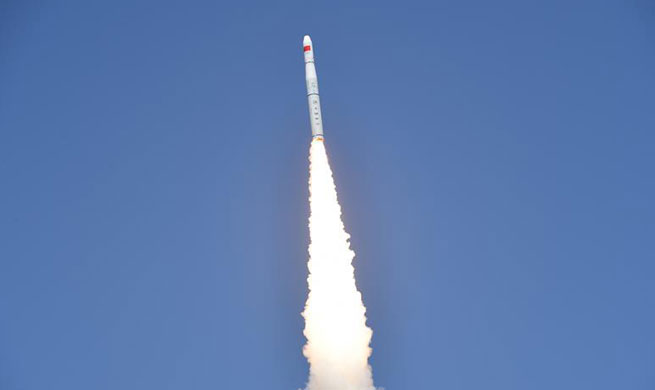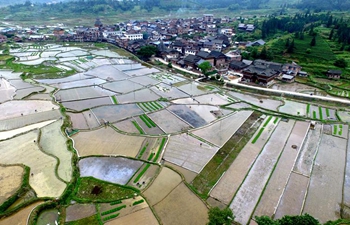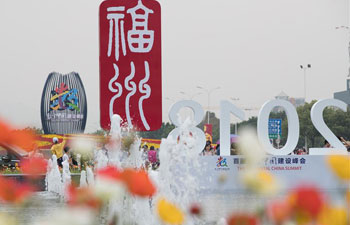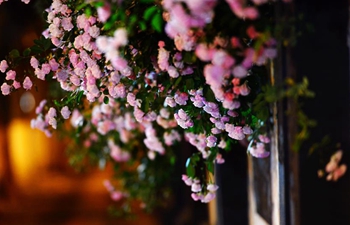KUNMING, April 26 (Xinhua) -- After three decades in the flower business, Yang Yuyong even has a variety of Chinese rose named after him.
Yang, 63, is a florist in southwest China's Yunnan Province where the mild climate has allowed the cultivation of a booming floral market.
The province has 200,000 flower growers, creating 800,000 jobs in the industry. Commercial flower plantations cover over 100,000 hectares. Last year, the market was worth about 50 billion yuan (about 7.9 billion U.S. dollars).
"Spring is the busiest season, when we experiment with new varieties of hydrangea, roses and Chinese roses," said Yang.
Yang learned flower-growing in northeast China from his father and was the first to register a trademark for a Chinese rose.
In order to expand his business after an initial success, Yang relocated to Yunnan in 1998, aiming for a broader overseas market. Now he has 80 hectares of flowers in Yuxi City.
"When I came to Yunnan, most flowers on the market were just ordinary, not good enough for export," he said.
Yang started to work with French company Meilland International in 1999. "Until 2008, we exported over 20 million yuan of flowers each year, but our business shrank during the financial crisis," he said.
Farmers like Yang now concentrate on developing new varieties. He holds39 patents for roses and 9 for hydrangeas.
"It takes a great deal of investment and manpower to come up with new strains, but the government has helped me," he said.
Yang is exempt from 600,000 yuan of taxes each year as support for innovation, but these new varieties of flowers are too expensive at the beginning for most growers who are required to pay royalties on registered varieties.
"Most think they are too expensive and the stakes are too high," said Zhang Li, head of an international flora auction center in Kunming, capital of Yunnan.
From 2006, the auction center has waived patent fees on seeds, only charging royalties to flower growers when their products are sold.
"Only five farmers grew the patented types in the beginning. Now more are growing them because they are resistant to disease and sell for higher prices," said Zhang.
Last year, close to 4,000 farmers planted patented roses, paying 8.5 million yuan of fees through the center. Yang collected in 200,000 yuan in royalties last year.
"IPR is ultimately a productive force. Patented products will eventually be accepted by more people," he said.
China is the world's largest producer and consumer of flowers, with 13,300 sq km of flower fields. Sales were 139 billion yuan (22 billion dollars) in 2016, with exports generating 617 million dollars.




